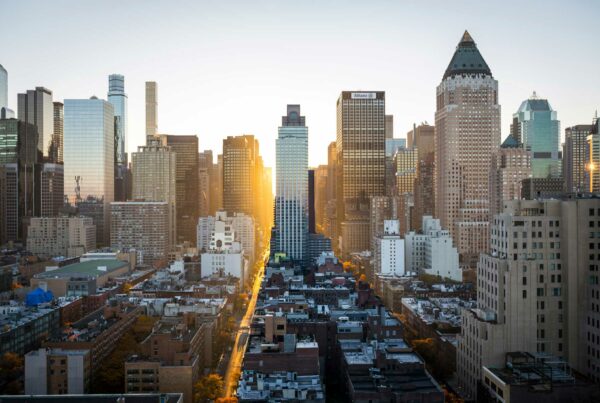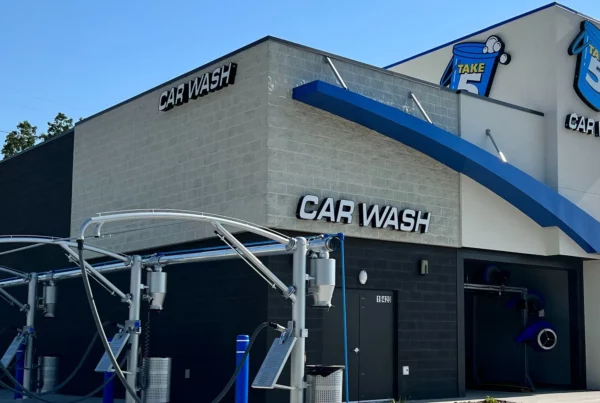WHO IS JOEY 1 CAP? (AND WHY DO NYC PROPERTIES SELL AT 2% CAP RATES?)
12/19/2016
When I first started in the real estate business, I remember a distinct conversation I had with one of the titans of the NYC real estate industry. This owner currently controls over 10,000 units, and he shared a piece of his investment philosophy with me. He did so by telling a story about the appropriate time to harvest fruit from a newly planted tree, which he said should not be done in the first seven years. He said, “Many investors miss opportunities because they are looking to harvest too quickly. I look at my acquisitions in 7 year time frames.”
I have thought about this conversation many times when new-to-market buyers ask me, “Why do properties in New York sell for 2% cap rates?” Let’s discuss four primary reasons why.
#1 Appreciation Over Cash Flow
Any real estate finance class will teach its students to evaluate what portion of an investments’ return comes from annual cash flow and what comes from a capital event (i.e. a sale or refinancing at the end of the holding period). For many successful NYC multifamily investments, the majority of the return will come from appreciation, not from cash flow.
Buying in New York ain’t garden style in Texas, and being comfortable with this paradigm is an important first step.
#2 Rent Stabilization Actually Benefits the Owner
Much of the political talk about rent regulation often focuses on the benefits it delivers to tenants. (Further discussion of this point would take up an entire post, as I believe in certain ways, tenants are harmed by rent stabilization.) However, landlords are often the unintended beneficiaries of this policy.
To understand this in its simplest form, consider the sales price of new construction buildings or those with no rent regulation. On average, these buildings sell at double or triple the price of those that are occupied by rent-regulated tenants. The policy of rent regulation artificially lowers the prices of buildings by keeping the rents low.
Or, viewed another way, it allows investors to purchase the properties at a discount to replacement cost. Long-term investors can buy buildings at 50% of their “free-market value.” If they hold them long enough, they will often reap the rewards of the increased value as the building’s tenants converts from stabilized to free-market.
#3 A Wide and Diverse Buyer Pool
I recently sold a $40 million building in Midtown Manhattan. As I was completing a tour of the building with the new purchaser, I asked him, “Why are you buying the building at a 2% return?” This investor, who owned many buildings in the city, responded with a slight smile: “Sometimes it’s good to have losses for a few years.”
In New York, a global city, investors make decisions for a variety of personal reasons. Some local and ‘generational’ investors are buying to expand their portfolio and are willing to accept lower initial returns. Many foreign investors want diversification, to move capital outside of their home country, or as an inflation-proof, cash alternative. On the other hand, value-add investors are looking to raise equity and execute a renovation plan that increases value. When these different groups compete as buyers, it translates into higher prices and very aggressive cap rates.
#4 A Severely Supply-Constrained Market
New York City has been in a housing shortage since the end of World War II, and this has no easy or quick solution. The market is geographically constrained, there are few development sites, and government regulations and bureaucracy are prohibitive to new construction. Furthermore, many development parcels are held by long term owners, under no pressure to sell, and only willing to trade at high prices, further impeding the supply of new construction.
These factors create one of the most expensive rental markets in the country and rents grow arguably faster here than anywhere else. With this type of rental growth, there is little reason for owners to sell – and many never do. In fact, the average holding period for a NYC landlord is over 50 years, with only 1-2% of the housing stock trading hands every year. So with little new construction, and very low turnover, new investors looking to enter the market have only a few opportunities each year to acquire the right property.
[ctt_hbox link=”8C4v7″ via=”no” ]Many investors miss opportunities because they are looking to harvest too quickly.[/ctt_hbox]Why “Joey 1 Cap”?
Many investors miss opportunities because they are looking to harvest too quickly. So, why is my partner nicknamed “Joey 1 Cap”?
Sometimes, even we are surprised at the prices properties sell for. Celebrating a closing one night, Joe exclaimed to the seller, “We really just sold that building at a one cap for you!” As soon as he said the phrase, everyone knew a new nickname had been born. And to industry insiders, he is now known as Joey One Cap.
As a broker hired by sellers to get the highest price, I don’t think he has any problems with it. (You can follow him on Instagram at @joey1cap.)
Here’s a picture of the gift I gave him to commemorate the name:
Buyers in this market must be bold, optimistic, and courageous. The best operators believe they can capitalize on unforeseen problems and opportunities. I wish you the best of luck with all your future investments.
Peter Von Der Ahe
212.430.5114
facebook LinkedIn Instagram Twitter





Finally someone speaks some truth. Thank you so much for this post! I was getting tired of all the Texas talk.
No one can do it better than you.
Thanks for the great info! Looking forward to more updates on this.